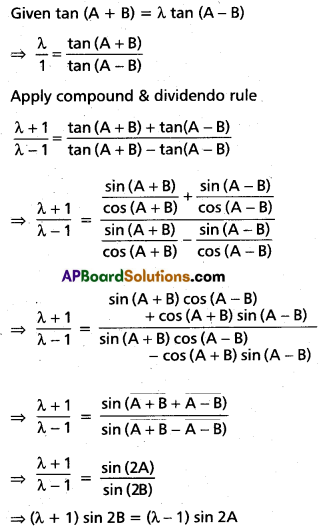These AP 7th Class English Important Questions 3rd Lesson A Journey through the Hills and Valleys will help students prepare well for the exams.
AP Board 7th Class English Unit 3 Important Questions and Answers A Journey through the Hills and Valleys
Reading Comprehension (Seen)
1. Read the following passage carefully.
It has been my longing since childhood to visit the Eastern Ghats. I’ve heard about the stunning beauty of the valleys, caves, tunnels, and the journey through ghat roads. The geographical magic of the Eastern Ghats and the frequent appearance of Lambasingi in both print and electronic media have always tempted me.
During the period from November to January, the hills with lushing greenery and blossoms welcome the visitors. The beauty of the valleys attracts even the movie makers.
I set off from Visakhapatnam along with my friends at 6 a.m. to catch the Kirandul Passenger, the only train from Visakhapatnam.to Berra Caves. Had 1 missed this mode of travel, I would have missed the most exciting moments of the train journey. And of course, there is a lot of scope to plan our journey on road hut it’s different. The first task that we had finished was taking breakfast after boarding the train. (A Journey through the Hills and Valleys)
Now, answer the following questions.
1. What was the longing wish of the speaker?
Answer:
To visit the Eastern Ghats
2. What were the things that tempted the author?
Answer:
The geographical magic of the Eastern Ghats and frequent appearance of lambasingi in both the print and electronic media
3. What was the attraction for the movie makers?
Answer:
The beauty of the valleys
4. What was the name of the train they caught?
Answer:
The Kirandul Passenger
5. What did they do after boarding the train?
Answer:
They took their breakfast.

2. Read the following passage carefully.
When the train was crossing the tunnels, we felt as if it were night because of the darkness for a few minutes even after the dawn. I could still remember the astounding experience in the longest tunnel among the 58 tunnels. Particularly the special coach called Vista dome coach, the air-conditioned tourist compartment with wide windows and LCD TV, .is a special attraction to this train journey After Chimidipalli station, just after a tunnel, a grand waterfall made us spellbound. I could not account all the water falls like this during the journey. The train reached Borra Caves by 9.40 a.m. We got down with our baggage. The train journey from Visakhapatnam to Borra Caves gave us an unforgettable experience which made us speechless. (A Journey through the Hills and Valleys)
Now, answer the following questions.
1. When did they feel as if it were night?
Answer:
When the train was crossing the tunnels
2. How many tunnels were there in their journey?
Answer:
58 tunnels
3. What is a Vista dome coach?
Answer:
It was the air-conditioned tourist compartment with wide windows and LCD TV.
4. Where did they see a grand waterfall?
Answer:
After Chimidipalli station, just after a tunnel
5. How was their journey to Borra Caves?
Answer:
It was an unforgettable experience.
3. Read the following passage carefully.
It was no exaggeration what t came to know about this God’s Architecture. At a height of 705 metres above the. sea level, made of Karstic limestone, manifested with magnificence, the Borra Caves are the largest caves in the country. While entering the caves everyone in our group enjoyed the echo of shouts of visitors. Unknowingly, we also shouted in excitement. You can understand the feelings of the boulders there. The chilled weather in the caves gave us a different experience. These caves are a good source of enjoyment and also experiential learning. Out of the caves, on either side of the road, the tribes sell their handicrafts made with bamboos, spices collected from forests and products of their farming, etc. to make their living. •
We had lunch at Borra Caves at 1 p.m. We had a very sumptuous lunch. Very special dishes of this agency area, which were differently cooked with local spices. (A Journey through the Hills and Valleys)
Now, answer the following questions.
1. What are the caves made of?
Answer:
They are made of Karstic limestone.
2. At what height were the caves located?
Answer:
At a height of 705 metres above the sea level
3. What did they enjoy while entering the caves?
Answer:
The echo of shouts of visitors
4. How was the weather in the caves?
Answer:
Chilly
5. What were the things sold by the tribes?
Answer:
Handicrafts made with bamboos, spices collected from forests and products of their farming, etc.

4. Read the following passage carefully.
We reached Araku Valley, the Andhra Ooty, and a monumental vacation spot in Andhra Pradesh. Wow! The aroma of coffee all over the surroundings certainly gets the exhausted minds energized. It was the Coffee Museum where one may be tempted to relish the taste of the coffee made with different aromas. Really, it’s the best beverage that I have ever had.
Here, we visited the Tribal Museum, the exhibition of many interesting things like the traditional art, handicrafts, ornaments and dresses used by the tribes, etc. It is an apt place for those who are enthusiastic to learn more about the culture and tradition of the local tribes. I was surprised to know the life style of tribal people. Kodus, a Primitive Tribal Group (PTG) use a different language which is a non-scripted dialect of Oriya. (A Journey through the Hills and Valleys)
Now, answer the following questions.
1. What is called the Andhra Ooty?
Answer:
Araku Valley
2. What is the beverage mentioned in the first paragraph?
Answer:
Coffee
3. What were the museums visited by the author?
Answer:
The Coffee Museum and the Tribal Museum
4. What was the apt place to learn more about the culture and tradition of the local tribes?
Answer:
The Tribal Museum
5. What was the thing that surprised the author?
Answer:
The lifestyle of the tribal people
5. Read the following passage carefully.
Lambasingi, the Kashmir of Andhra Pradesh, a small hamlet in Visakhapatnam district, is known for the snowfall with a record fall of 0°C and sometimes – 3°C temperatures particularly between November and January. It is also called ‘Korra Bayalu’ in their local language. Fenced by towering hills, tall green trees and surrounded by the mist, the area provides a perfect magical setting to enjoy winters. If anyone stays out in the open, one will be frozen.
Feeling the warmth of the sunrise at Lambasingi made an auspicious start of the day that lasts forever. After having breakfast, we visited Kondakarla Bird Sanctuary, one of the best places of visit. I was glad to see the strange visitors, the birds. I wonder how they survive in the intense cold weather. But their joy knew no bounds as they live in their natural habitat. (A Journey through the Hills and Valleys)
Now, answer the following questions.
1. What is Lambasingi called?
Answer:
The Kashmir of Andhra Pradesh or Korra Bayalu
2. What is Lambasingi known for?
Answer:
It is known for the.snowfall with a record fall of 0°C and sometimes – 3°C temperatures particularly between November and January.
3. What is the best seasbn to enjoy the weather of Lambasingi?
Answer:
Winter
4. What happens if anyone stays out in the open at Lambasingi?
Answer:
One will be frozen.
5. What was the nearby attraction to Lambasigi?
Answer:
Kondakarla Bird Sanctuary

6. Read the following passage carefully.
Gandikota, the magnificient piece of nature’s architecture, has come to be known as the Hidden Grand Canyon of India. The travelers who visit will be stunned by its beauty. It is located in Kadapa District of Andhra Pradesh. It resembles the Grand Canyon, Arizona, US. There are many astounding areas that are alluring to the visitors in and around Gandikota. ‘Gandi’ means ‘Canyon’ and ‘Kota’ means ‘Fort’. The village nearby this area is known to be Gandikota. ‘ ‘
The spectacular gorge formed by the Penna River that cuts through Erramala hills offers a beautiful view. A gorge is a narrow valley between hills or mountains, with steep rocky walls and a stream running through it. In fact, gorges are formed because of erosion of rock over a long period of time. (Gandikota – The Grand Canyon of India)
Now, answer the following questions.
1. What is Gandikota to be known as?
Answer:
The Hidden Grand Canyon of India
2. What makes the travelers stunned?
Answer:
The beauty of Gandikota
3. Where is Gandikota located?
Answer:
In Kadapa District
4. What is a gorge?
Answer:
A gorge is a narrow valley between hills or mountains, with steep rocky walls and a stream running through it.
5. How are gorges formed?
Answer:
Because of erosion of rock over a long period of time
7. Read the following passage carefully.
The Fort made of red stone has excellent palaces adorned with fine carvings. It is very exciting to walk along the fort’s wall and .spend a few moments by the serene river. A trip to this place is worth it, considering the fact that you can peep into history through the walls of Gandikota Fort, which narrates the tale of various civilizations that existed thousands of years ago.
The best time to visit this place is between September and February, as the weather ‘ during this time is comparatively pleasant. Summers are too hot and there will be significantly low water levels, the canyon seems less appealing. (Gandikota – The Grand Canyon of India)
Now, answer the following questions.
1. How is the fort made?
Answer:
It is made of excellent palaces adorned with fine carvings.
2. What is an exciting thing to do at the fort?
Answer:
Walking along the fort’s wall.
3. Which narrates the tale of various civilizations?
Answer:
The walls of Gandikota Fort
4. What is the best time to visit the fort?
Answer:
Between September and February
5. When does the fort Seem less appealing?
Answer:
In summer
Reading Comprehension (Unseen)
1. Read the following passage carefully.
Have you ever seen a UFO? A UFO is an Unidentified Flying Object, a strange object or light that people see in the sky. Many people believe that these strange lights are really spaceships from another planet.
For years people have seen and heard many odd things in the sky, blinking and glowing lights, flying objects shaped like saucers, and moving objects making strange noises. Some people have even taken pictures of these unusual sights.
Some of these UFOs are really aeroplanes, weather balloons or meteors. But many UFO reports are still a mystery.
Now, answer the following questions.
a) What do people believe about these strange lights?
Answer:
People believe that these strange lights are really spaceships from other planets.
b) What are these UFOs really?
Answer:
These UFOs are really aeroplanes, weather balloons or meteors.
Choose the correct answer from the choices given.
c) U.F.O stands for:
i) Unknown Flying Object
ii) Unidentified Flying Object
iii) Unseen Flying Object
Answer:
ii) Unidentified Flying Object
d) U.F.Os are believed to be spaceships from other
i) countries
ii) continents
iii) planets
Answer:
iii) planets
e) Which of the following statements is true?
i) UFOs are make-believe.
ii) Moving objects with blinking lights have to be UFOs
iii) People have seen moving objects making strange noises.
Answer:
i) UFOs are make-believe.

2. Read the following passage carefully.
Do you know about one of the most famous monsters in the world? The Loch Ness Monster is a large animal that some people believe lives in Loch Ness, a deep dark lake in Scotland. For many years, hundreds of people have reported seeing something strange in the lake. They have even given it the nick name “Nessie’.
Nessie is said to be about 30 feet long, with a long slender neck, one or two humps and flippers.
There are even pictures that have been taken of a large animal-like shape in the water. Scientists are still trying to solve the mystery of Nessie.
Now, answer the following questions.
a) Where do the Loch Ness Monsters live?
Answer:
Loch Ness Monsters are said to be lived in the Loch Ness lake in Scotland.
b) How is Nessie?
Answer:
Nessie is said to be about 30 feet long with a long slender neck, one or two humps and flippers.
Choose the correct answer from the choices given,
c) Actually the Loch Ness is the name of a
i) country.
i) city.
iii) lake.
Answer:
iii) lake.
d) Which of the following is a fact about Nessie?
i) Nessie has a long slender neck.
ii) Nessie has flippers.
iii) Nessie is a mystery.
Answer:
iii) Nessie is a mystery.
e) What was the Nickname given to Loch Ness Monster?
i) Nest
ii) Nestle
iii) Nessie
Answer:
iii) Nessie
Interpretation Of Non-Verbal Information
1. Read the following tree diagram carefully.

Now answer the following questions.
a) What does the above diagram show?
Answer:
The above diagram shows a tree diagram of musical instruments.
b) What are the three main categories of musical instruments?
Answer:
Three catagories : (1) Wind instruments, (2) Percussion instruments, (3) Stringed instruments.
Choose the correct answer from the choices given below.
c) Which of the following is a stringed instrument?
i) Harp
ii) Horn
iii) Tabla
Answer:
i) Harp
d) What type of musical instrument is Xylophone?
i) Percussion instrument
ii) Wind instrument
iii) Stringed instrument
Answer:
i) Percussion instrument
e) Which of the following statements is TRUE based on the information given?
i) All string instruments are a type of percussion instruments.
ii) Wood block is a wind instrument.
iii) Guitar and Violin are stringed instruments.
Answer:
iii) Guitar and Violin are stringed instruments.

2. Study the family tree of Bala Krishna.

Now answer the following questions.
a) Who are the grandparents of Praveen?
Answer:
Balakrishna and Ragini
b) How many granddaughters does Bala Krishna have?
Answer:
Five granddaughters
Choose the correct answer from the choices given below.
c) Medha is the daughter of ……………..
i) Rohit
ii) Veena
iii) Bhavya
Answer:
ii) Veena
d) Praveen and Raasi are ……………
i) brothers
ii) cousins
iii) friends
Answer:
ii) cousins
e) Which of the following statements is TRUE based on the information given?
i) Rohit has two daughters.
ii) Ananya and Raasi are cousins.
iii)Rohit’s wife is Bhavya.
Answer:
i) Rohit has two daughters.
Vocabulary
Synonyms
Choose the words with similar meanings (synonyms) from the list given to the words underlined.


Answer:
a) a) fascination, b) induced
b) a) thrilling, b) abundant
c) a) surprising, b) broad
d) a) alighted, b) memorable
e) a) surroundings, b) peaceful
e) a) advantage, b) panoramic
Antonyms
Write the opposites (antonyms) for the underlined words.
a) I could still remember (a) the astounding (b) experience in the longest tunnel among the 58 tunnels.
b) We got down (a) with our baggage. The train journey from Visakhapatnam to Borra Caves gave us an unforgettable (b) experience which made us speechless.
c) Log huts, tents set in tribal environment for the tourists’ night stay are more enjoyable (a) as they offer pleasant (b) and serene atmosphere that is not found in concrete jungles.
d) Here, we visited the Tribal Museum, the exhibition of many interesting (a) things like the traditional (b) art, handicrafts, ornaments and dresses used by the tribes, etc.
e) I feel proud (a) to visit this garden for its great history. This popular (b) botanical garden, built in 1942 in 26 acres, was the source of cultivating vegetables for the soldiers who fought in the World War II.
f) Lambasingi, the Kashmir of Andhra Pradesh, a small (a) hamlet in Visakhapatnam district, is known (b) for the snowfall with a record fall of 0°C and sometimes -3°C temperatures particularly between November and January.
Answer:
a) a) forget, b) unimpressive
b) a) board / got in, b) forgettable
c) a) unenjoyable, b) nasty
d) a) uninteresting, b) unconventional
e) a) sorry, b) unpopular
f) a) big, b) unfamiliar
Right Forms of the Words
Fill in the blanks with the right form of the words given in the brackets.
a) The _____ (a) (beauty / beautiful) of the valleys _____ (b) (attacts / attraction) even the movie makers.
b) It was no _____ (a) (exaggerate / exaggeration) what I came to know about this God’s _____ (b) (Architecture / Architect).
c) These caves are a good source of _____ (a) (enjoyment / enjoyed) and also _____ (b) (experientially / experiential) learning.
d) Here, we visited the Tribal Museum, the _____ (a) (exhibited / exhibition) of many interesting things like the _____ (b) (tradition / traditional) art, handicrafts, ornaments and dresses used by the tribes, etc.
e) This _____ (a) (popular1 / popularity) botanical garden, built in 1942 in 26 acres, was the source of _____ (b) (cultivate / cultivating) vegetables for the soldiers who fought in the the World War II.
f) Feeling the _____ (a) (warmly / warmth) of the sunrise of Lambasingi made an _____ (b) (auspicious / auspiciously) start of the day that lasts forever.
Answer:
a) a) beauty, b) attracts
b) a) exaggeration, b) Architecture
c) a) enjoyment, b) experiential
d) a) exhibition, b) traditional
e) a) popular, b) cultivating
f) a) warmth, b) auspicious
Spelling Test
Type – 1 : Vowel Clusters
Complete the following words using “ai, au, ea, ee, ei, eo, ia, ie, io, oa, oi, oo, ou, ua, ui or uo”.
| a) aftern _ _ n | b) sh _ _ ting | c) pi _ _ sant |
| d) f _ _ nd | e) of c _ _ rse | f) coff _ _ |
| g) plantat _ _ ns | h) betw _ _ n | i) vacat _ _ n |
| j) surr _ _ ndings | k) cert _ _ nly | l) exh _ _ sted |
| m) mus _ _ m | n) r _ _ lly | o) exhibit _ _ n |
| p) tradit _ _ nal | q) enthus _ _ tic | r) p _ _ pie |
| s) lang _ _ ge | t) d _ _ lect | u) b _ _ n |
| v) s _ _ m | w) picturesq _ _ | x) h _ _ rt |
| y) self _ _ s | z) ind _ _ d | |
Answer:
| a) afternoon | b) shouting | c) pleasant |
| d) found | e) of course | f) coffee |
| g) plantations | h) between | i) vacation |
| j) surroundings | k) certainly | 1) exhausted |
| m) museum | n) really | o) exhibition |
| p) traditional | q) enthusiastic | r) people |
| s) language | t) dialect | u) boon |
| v) seem | w) picturesque | x) heart |
| y) selfies | z) indeed | |
Exercise – 2
| a) f _ _ St | b) mov _ _ s | c) f _ _ l |
| d) pr _ _ d | e) gr _ _ t | f) b _ _ lt |
| g) s _ _ rce | h) sold _ _ r | i) f _ _ ght |
| j) tr _ _ ning | k) tr _ _ | l) h _ _ se |
| m) f _ _ t | n) ceremon _ _ l | o) b _ _ t |
| p) gr _ _ n | q) auspici _ _ s | r) sanct _ _ ry |
| s) b _ _ nd | t) p _ _ ce | u) pi _ _ sure |
| v) adventur _ _ s | w) destinat _ _ n | x) b _ _ r |
| y) rem _ _ ning | z) l _ _ k | |
Answer:
| a) feast | b) movies | c) feel |
| d) proud | e) great | f) built |
| g) source | h) soldier | i) fought |
| j) training | k) tree | 1) house |
| m) feet | n) ceremonial | o) beat |
| p) green | q) auspicious | r) sanctuary |
| s) bound | t) peace | u) pleasure |
| v) adventurous | w) destination | x) bear |
| y) remaining | z) look | |
Type – 2 : Suffixes
Complete the following words with the suitable suffixes given in the brackets.
a) During the period from November to January, the hills with lushing green ___ (ery / ary) and blossoms welcome the visit ___ (ers / ors).
b) The train journey from Visakhapatnam to Borra Caves gave us an unforgett ___ (eble/ able) experience which made us speech ___ (loss / less).
c) These caves are a good source of enjoy ___ (ment / mant) and also experien ___ (tial / cial) learning.
d) Log huts, tents set in tribal environ ___ (ment / mant) for the tourists’ night stay are more enjoy ___ (eble /able) as they offer pleasant and serene atmosphere that is not found in concrete jungles.
e) It is indeed, a wonder ___ (ful / full) feast for the eyes. Here, the rail ___ (way / weigh) track and the roadway seem to go parallel.
f) At night, there was an unforget ___ (teble / table) camp fire in which we all enjoyed Dhimsa, the local ceremon ___ (yal / ial) dance of the agency, performed by 12 to 16 women while men beating the drums.
Answer:
a) greenery, visitors
b) unforgettable, speechless
d) environment, enjoyable
f) unforgettable, ceremonial
c) enjoyment, experiential
e) wonderful, railway
Type – 3 : Wronalv Spelt Words
Identify the wrongly spelt word and write its correct spelling in the space provided.
a) exageration, valley, popular, entire
Answer:
exaggeration
b) pleasure, cultivating, magnifisense, frequent
Answer:
magnificence
c) aspicious, aspect, enjoyable, stunning
Answer:
auspicious
d) experience, parallel, sumptus, intense
Answer:
sumptuous
e) atraction, concrete, glance, amazing
Answer:
attraction
f) convert, unforgetable, trekking, compensating
Answer:
unforgettable
Classification of Words
Arrange the following words under the correct headings.

Choice of the Words
Fill in the blanks choosing the suitable words from those given in the box.


Answer:
a) 1) sumptuous, 2) cooked
b) 1) environment, 2) atmosphere
c) 1) monumental, 2) exhausted
d) 1) apt, 2) enthusiastic
e) 1) tribal, 2) dialect
f) 1) boon, 2) scenic
g) 1) parallel, 2) phenomenon
h) 1) aspect, 2) contrasting
i) 1) Compensating, 2) ceremonial
j) 1) surrounded, 2) frozen
Prefixes / Suffixes
Add appropriate prefixes / suffixes to the following roots to make new words.

Grammar
I. Edit the following passage correcting the underlined parts.
1. Dolphins are very interesting animals. They, looks (a) like fish but they are not fish. Fish has (b) cold blood but dolphins have warm blood. Fish can live under water and (c) dolphins cannot. They can stay in (d) water for a long time.
Answer:
a) look b) have c) but d) under
2. An (a) Olympic Games are the great (b) celebrations of sport in the world. They are held once in four years. The Olympic Games began at (c) Olympia in 776 B.C. They took place from time to time till (d) 393 A.D.
Answer:
a) The b) greatest c) in d) until
3. Dhyanchand is (a) a very well-known hockey player. He was born at (b) 29 August 1905 in Allahabad. He studied in the (c) local secondary high school. In 1922, he joined a (d) British army as a sepoy.
Answer:
a) was b) on c) a d) the
4. Vikram Sarabhai was responsible to (a) the setting up of the Rocket Launching station or (b) Space Science and Technology Centre in (c) Thumba in Kerala. A (d) Rocket and Launching Ranger at Srihaj-i Kota in Andhra Pradesh was set up by Dr. Sarabhai only.
Answer:
a) for b) and c) at d) The

II. Complete the passage choosing the right words from those given below. Each blank is numbered and for each blank four choices are given. Choose the correct answer and write (A), (B), (Q or (D) in the blanks.
1. Have you ever ____ (1) people putting ____ (2) thumb impression on important documents? This is done mainly ____ (3) illiterate people ____ (4) they cannot put their signatures.
1) A) see B) sees C) seen D) seeing
2) A) its B) his C) their D) her
3) A) with . B) from C) by D) of
4) A) so B) because C) as D) since
Answer:
1) C 2) C 3) C 4) B
2. The finger prints ____ (1) the police to ____ (2) the thieves and criminals. ____ (3) ____ keep a record of the finger prints of thieves and criminals ____ (4)
to them.
1) A) helps B) help C) helped D) helping
2) A) identify B) identifying C) identified D) identifies
3) A) He B) She C) They D) It
4) A) knows B) know C) known D) knowing
Answer:
1) B 2) A 3) C 4)C
3. A cell phone is ____ (1) extremely sophisticated radio. ____ (2) cell phones ____ (3) can talk to anyone ____ (4) the planet from just about anywhere.
1)A) a B) an C) the D) any
2) A) By B) With C) From D) On
3) A) she B) he C)they D) you
4) A) on B) in C) over D) above
Answer:
1)B 2) B 3) D 4) A
4. Abdul is ____ (1) friend. One evening he ____ (2) home from school. He‘saw a boy ____ (3) in a tank. Suddenly he jumped ____ (4) the tank and saved the boy.
1) A) I B) my G) me D) mine
2) A) is returning B) returns C) was returning D) returned
3) A) drowns B) drowning C) drowned D) drown
4) A) in B) on C)into . D) over
Answer:
1) B 2) C 3) B D) C
III. Fill in the blanks with suitable prepositions given in the box.

1) There is a box ______ the table.
2) I will meet you ______ the evening.
3) He reached the place ______ 8.30 a.m.
4) Rahul went ______ a movie his friends.
5) The cat jumped ______ the well.
6) She hurried ______ the entrance to receive the guest.
7) His house is ______ the sea.
8) A number of colourful butterflies are flying ______ us.
9) We are living ______ the same roof.
10) They are going to travel the ______ world.
Answer:
- on
- in
- at
- to with
- into
- towards
- by
- above
- under
- around
IV. Fill in the blanks with suitable prepositions given in the box.

1) She is walking ______ the road slowly.
2) The Palk strait is located ______ India and Sri Lanka..
3) The Thames river flows ______ London.
4) She will conje to India ______ November.
5) Mr. Alexander has taught in this school ______ one year.
6) He put a paper weight ______ the papers.
7) She always holds an umbrella ______ her head.
8) There is a temple ______ our school.
9) It is easier to walk ______ the hill than go up.
10) I saw your friend ______ the park.
Answer:
- along
- between
- through
- in
- for
- on
- over
- beside
- down
- at
V. Write the other degrees of the following adjectives.
| Positive Degree | Comparative Degree | Superlative Degree |
| small | smaller | smallest |
| safe | safer | safest |
| clever | cleverer | cleverest |
| bright | brighter | brightest |
| hot | hotter | hottest |
| beautiful | more beautiful | most beautiful |
| precious | more precious | most precious |
| hard-working | more hard-working | most hard-morking |
| much | more | most |
| good | better | best |
| bad | worse | worst |
| far | farther / further | farthest / furthest |
VI. Read the following sentences. Label them with ‘P’ for Positive, ‘C’ for Comparative and ‘S’ for ‘Superlative’.
1. Rahul Dravid is one of the greatest batsmen in the world.
2. Alexander was the greatest soldier in the world.
3. India is one of the fastest developing countries in the world.
4. No other river in the world is as long as the Nile.
5. Hindi is one of the most popular languages in India.
6. Lara is not as great as Tendulkar.
7. Rekha is one of the most beautiful girls in the class.
8. Very few metals are as expensive as platinum.
9. Shimla is colder than all hill stations in the Himachal Pradesh.
10. Delhi is one of the most crowded cities of India. ‘
Answer:
- Superlative Degree
- Superlative Degree
- Superlative Degree
- Positive Degree
- Superlative Degree
- Positive Degree
- Superlative Degree
- Positive Degree
- Comparative Degree
- Superlative Degree
Creative Writing
1. Describe a journey with your family.
Answer:
Recently we planned a tour to Araku Valley. Dad said it’s a very pleasant and cool hill station that can be visited in summer. Charan and I were so excited and told our friends about our trip to Araku. Mom also said its a worthy sight seeing place.
We started early in the morning of Monday by a train to Vishakhapatnam. I enjoyed the climate and scenic beauty sitting by the window. Mom made some snacks and lunch for us to enjoy during the journey. We reached Vishakhapatnam in the after¬noon. We took rest in a hotel and went to see R.K. Beach in the evening. First time, to go near the heavy waters scared me a lot. But my father held our hands and gave the courage to go near the waters. We enjoyed a lot with the on and off movements of tides.
We took rest for the night and started for Araku early in the morning by train. The journey was pleasant and exciting as we passed through forests and tunnels. Children in the train shouted with joy. We reached Araku, hired a room and got fresh. We hired a taxi to see some old temples. Borra caves, tea and coffee plantations and beautiful gardens. We enjoyed the trip. The garden was beautiful with flower beds, bushes and decorated trees.
The trip was a memorable experience in my life.
2. One of your Mends wishes to visit the place you have visited recently. Write a letter to your Mend giving suggestions to help him make his/her Mp successful.
Answer:
5 – 23 – 13/B,
6/18 Brodipet,
GUNTUR.
6th June, 20xx. My dear Sriram, I am fine and pink in health. I hope the same with you there. I would like to describe the place, Hyderabad which I have visited recently. Hyderabad is thexapital of Telangana. It is a big cosmopolitan city. People of different languages, cultures and traditions live harmoniously together. There are many places worth-seeing in Hyderabad. Some of them are -1) the Charminar 2) the Salarjung Museum 3) the Legislative Assembly 4) the Birla Mandir 5) Nehru Zoological Park 6) Planetarium 7) The Tank Bund 8) Rajiv International Airport 9) Ramoji Film City 10) Hussain Sagar and the Buddha Statue. It is a lovely city. The clim’ate is fine. The Hussain Sagar joins the twin cities namely Hyderabad and Secunderabad. You should visit it soon. Please convey my regards to your parents. Yours lovingly,
Hanuman Address on the envelope :
M. Sriram,
S/o Mr. M. Suryaprakash,
1-2-34 A,
Temple Street,
Kandukur.
Prakasam. (dt) |

3. You have read that the author and his friends planned a tour to Araku Valley in the lesson, “A Journey through the Hills and Valleys”. He travelled by the Kirandul Passenger up to Borra Caves. The author and his friends enjoyed themselves the train journey. Their travel in Vista dome coach of Kirandul Passenger gave them memorable experience.
Now, describe the feelings of the author while he was travelling by the Kirandul Passenger along with his Mends.
Answer:
The author felt very happy when they planned to visit Araku Valley. He started from Visakhapatnam along with his friends and travelled by the Kirandul Passenger, the only train from Visakhapatnam to Borra Caves. As soon as he boarded the train, he started thinking. He thought, “What a wonderful occasion it is ! The travel in Vista dome coach with wide windows and LCD TV is really a special attraction to this train journey. The scenery of the hills with lushing greenery and blossoms is magnificent to watch. Oh, now, I think we are crossing the longest tunnel on our way. It gives me an astounding experience. Oh, here comes a grand waterfall which makes all the travellers spellbound. I can’t account all the waterfalls like this during the journey. The sheer beauty of the lushing greenery, various coloured blossoms, tunnels, waterfalls, valleys, ghat roads, etc. has taken my breath away. This train journey from Visakhapatnam to Borra Caves has given us an unforgettable experience and has made us speechless !”
4. Do you have any memorable day in your life ? Narrate about it in a paragraph.
Answer:
A DAY THAT I CAN’T FORGET
There are many unforgettable days in my life. Of these is the day when the result of my class VI examination was declared. I had done all my papers well. I expected a good result. But I had stood first in the entire district. I felt very very happy. My parents and other family members were very happy. All my friends and teachers came to congratualte me on this great success. Sweets were distributed in the colony. My father decided to send me to a very good school for further education. I can’t forget that day.
5. Recently you have spent a week in hills at your grandparents’ house.’You enjoyed your stay. Write a paragraph about 100 words describing the joy of living in the lap of nature.
Answer:
How I spent a week in hills
Last month I spent a week in hills in my grandparents’ house. My grandparents live in Rishikesh at the foothills of the great Himalayas. This year it was very hot in the plains. So I went to them. First, the weather was pleasant though days were hot. Sitting on the banks of holy Ganges in the background of lush green forest and hills gave us peace. We went to Chamoli for two days. There we enjoyed our stay. The nature looked fresh and pure. The distant hills and snow-covered tops added glory to natural beauty. We ate seasonal fruits and tasted local food to our fill. There was no tension or pressure of any kind. It was a blessing to be in the lap of nature.
6. Write a Biographical sketch of Mr. Ramnath Kovind, the President of India, using the information given below :
Birth : 1st October, 1945
Paraunk near Kanpur, Uttar Pradesh.
Parents : Sri Maiku Lal
Smt. Kalavathi
Education : School education in Kanpur – B. Com, LL.B, Kanpur University.
Spouse : Smt. Savitha
Positions held : * Advocate for Government of India at the Delhi High Court from 1977 to 1981.
* Junior Council for Government of India in Supreme Court from 1982 to 1984.
* Governor of Bihar from 2015 to 2017.
Parliamentary life : Member of Rajya Sabha from Uttar Pradesh from 1994 to 2000.
Assumed the office as President : 25th July, 2017
Answer:
Ramnath Kovind was born on 1st October, 1945 in Paraunk, near Kanpur, Uttar Pradesh. His parents were Sri Maikulal and Smt. Kalavathi. He completed his school education in Kanpur and obtained the degrees of B.Com and L.L.B from Kanpur University. He married Savitha. He was an advocate of Indian Government in the Delhi High Court from 1977 to 1981 and Indian Government Junior Council in the Supreme Court from 1982 to 1984. Before assuming charge of the office of the 14th President of India on July 25,2017, Kovind served as the 36th Governor of the state of Bihar from 2015 to 2017. He was elected as a member of Rajya Sabha from Uttar Pradesh from 1994 to 2000.
7. Write a story using the following hints.
Hints: Four bulls in a field – very good friends – lion feared to near them – thought of a plan – said bad words against friends – then bulls grazed separately – lion killed one after the other – united – strength.
Answer:
FOUR FOOLISH BULLS
Once there lived four bulls by the side of a forest. They were strong and sturdy. They were united. They grazed together. A lion, which lived in the forest, very much wished to make a feast of the bulls. The lion, did not dare to go near the bulls. He thought of a plan. He met each bull in turn and said bad words against the other bulls. The foolish bulls believed his words. They started grazing separately. The lion took advantage of the disunity of the bulls. He killed one after the other and ate all the four bulls.
Moral: Unity is strength, (or) United we stand, divided we fall.

8. Write a story using the following hints:
Hints : A king very fond of stories – man who tells a story that never ends to marry his daughter – a handsome young man begins his story – a little ant – nothing to eat – sees a big building – decides to take some rice from it – crawls inside – carries a grain of rice on back – crawls home – the young man goes on about little ant – king understands – marries off his daughter to him.
Answer:
THE CLEVER MAN’S ENDLESS STORY
Once there lived a king. He was very much fond of stories. He declared that he would give his daughter in marriage to the man who would tell him an endless story.
One day a clever and handsome young man came to the king.. He started telling an endless story. The story ran like this. “Once there was a little ant. It was hungry. It had nothing to eat. It saw a big building. It crawled inside it. There was a heap of rice. It carried a grain of rice on its back to its hole. It came back. Again it carried another grain of rice”.
The young man repeated the same story of the ant several times. The story seemed endless. The king got vexed. He understood the cleverness of the young man. He mar-ried off his daughter to him.
Moral: Your wisdom comes to your help, (or) Knowledge is power.
![]()
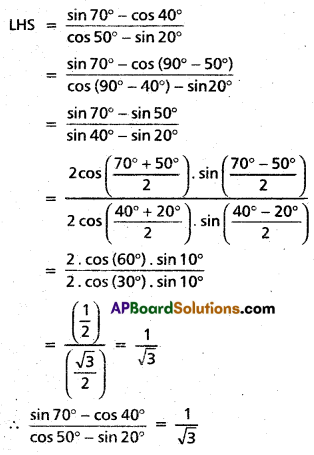
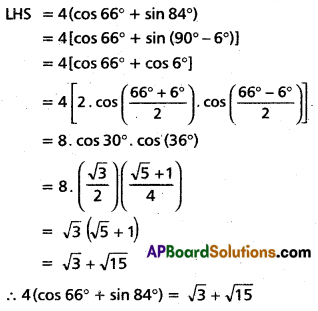
![]()
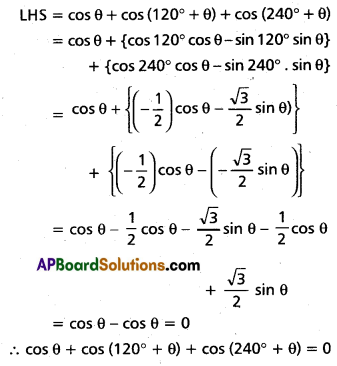
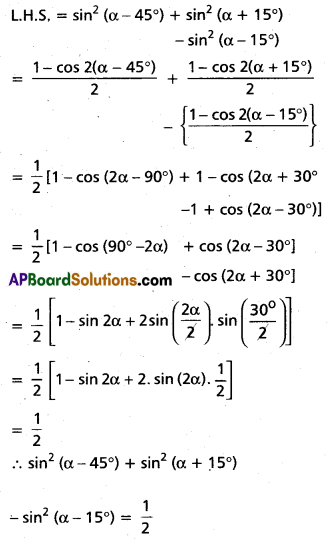
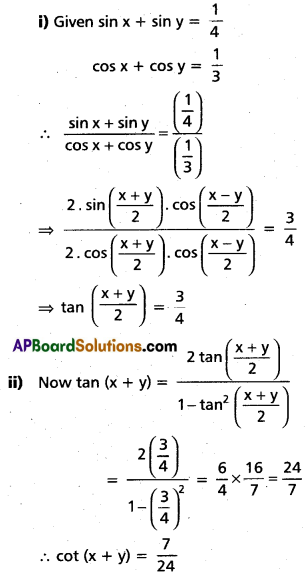
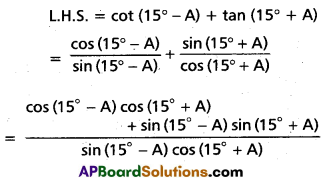
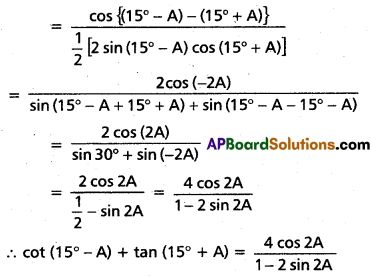
![]()
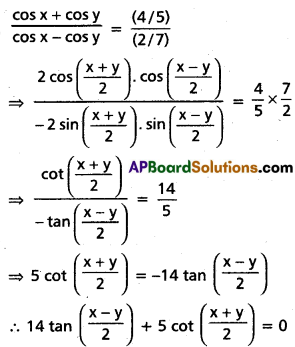
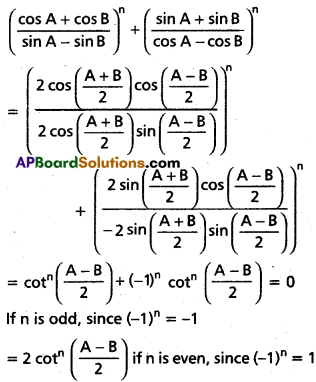
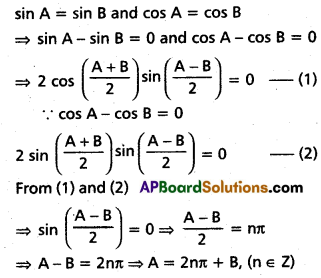
![]()
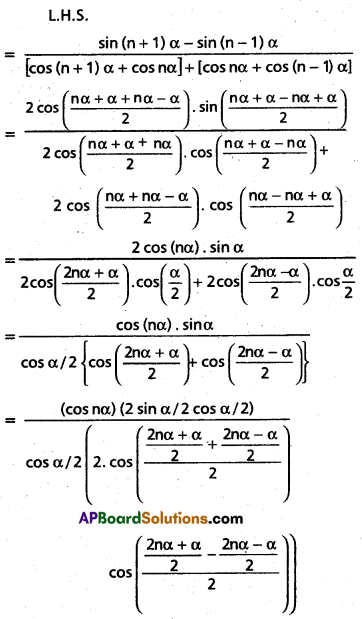
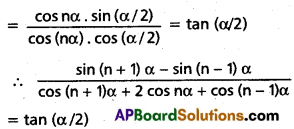
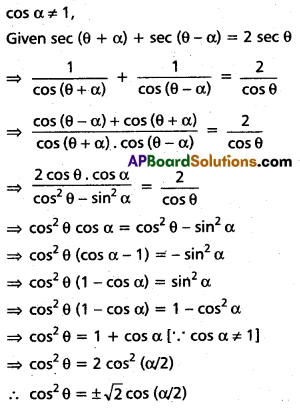
![]()
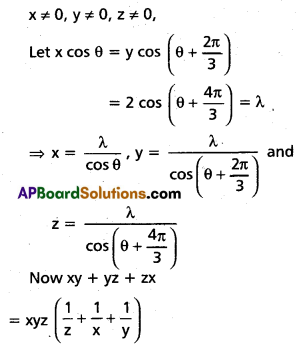
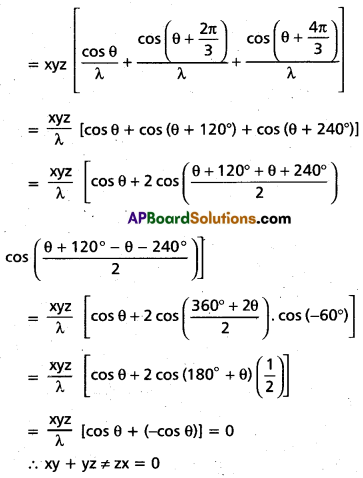
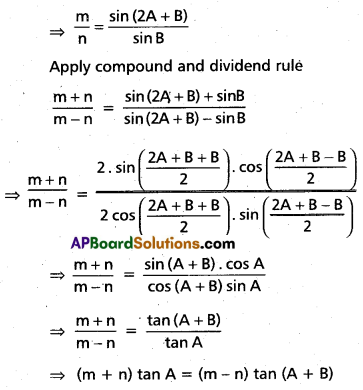
![]()
